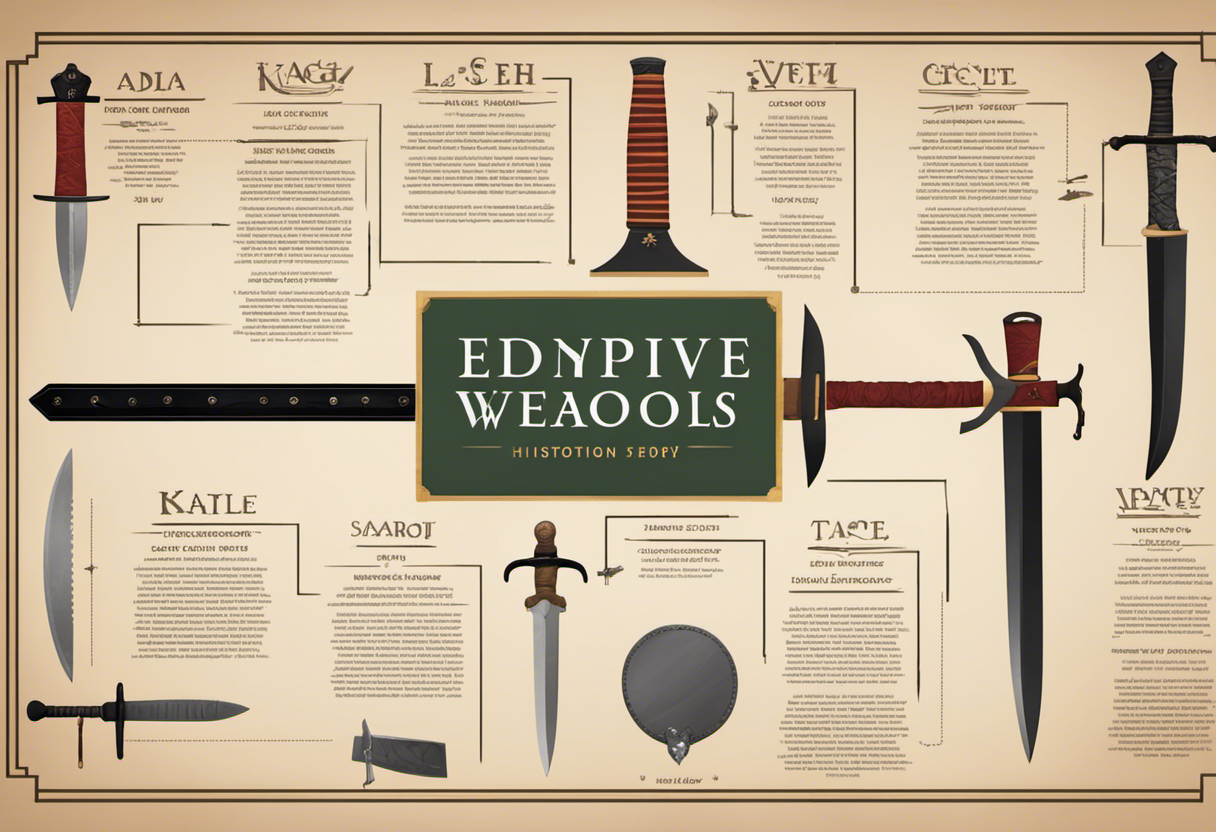The Fascinating History of Knives: From Ancient Origins to Modern Designs

- Origins of the Knife
- The Evolution of Knife Designs
- Knives in Ancient Civilizations
- The Role of Knives in Medieval Times
- Modern Knife Innovations
- Conclusion
History Of Knives have been an essential tool for humans for thousands of years, serving a multitude of purposes throughout history. From their humble beginnings as simple sharp stones to the intricate and innovative designs of today, the evolution of knives tells a captivating story. Let’s delve into the origins of the knife, explore its transformation over time, and understand its role in ancient civilizations, medieval times, and modern innovations.
Origins of the Knife
The concept of using a sharp object for cutting and hunting can be traced back to prehistoric times. The earliest knives were made from flint, obsidian, or bone, sharpened to create a cutting edge. These primitive tools served as essential utensils for early humans, aiding them in tasks such as hunting, skinning animals, and preparing food.
Over time, humans discovered the benefits of attaching handles to these basic blades, making them easier to use and control. This innovation marked the beginning of the knife’s evolution into a more functional and versatile tool.
The Evolution of Knife Designs
As human civilizations advanced, so did the craftsmanship and design of knives. In ancient Egypt, bronze replaced stone as the primary material for knife making.
The Iron Age brought significant advancements in knife production. Iron, being more durable and stronger than bronze, allowed for the creation of longer blades and sharper cutting edges. The introduction of folding knives, with blades that could be folded into the handle for safe storage, revolutionized the portability and safety of these tools.
Knives in Ancient Civilizations
Throughout history, various civilizations crafted knives to suit their specific needs and cultural practices. In ancient Rome, knives played a vital role in daily life, ranging from kitchen utensils to weapons used by soldiers. The Romans excelled in forging high-quality steel knives, a skill that was passed down through generations.
In the Far East, traditions of knife making developed independently. Japanese knives are highly regarded for their precision, with the traditional art of samurai sword making influencing the craftsmanship of kitchen knives, such as the renowned Santoku and the delicate Yanagiba.
The Role of Knives in Medieval Times
During the Middle Ages, knives continued to be integral to daily life but took on new roles. They were not only used as essential tools for cooking and eating but also served as defensive weapons. Daggers, with their sharp blades and compact design, were favored by knights and nobles. These medieval knives often featured elaborately decorated handles, showcasing the status and wealth of their owners.
Modern Knife Innovations
With the advancement of technology, the modern era has witnessed an explosion of innovation in knife design. Stainless steel, invented in the early 20th century, revolutionized knife production by providing rust resistance and increased durability.
In recent years, ergonomic designs and lightweight materials have gained popularity. Knives with titanium or carbon fiber handles offer a comfortable grip and reduced weight, making them ideal for outdoor enthusiasts and professional chefs alike.
Additionally, the 21st century has given rise to specialized knives tailored to specific purposes. Fillet knives for precision fish cutting, survival knives for extreme outdoor activities, and tactical knives for military and law enforcement use exemplify the diverse range of modern knife designs.
Conclusion
The history of knives is a testament to human innovation and adaptability. From its humble beginnings as a simple sharp stone to the countless modern variations, the knife has transformed to meet the evolving needs and preferences of society. Whether it be for survival, hunting, cooking, or self-defense, the knife remains an integral tool in our daily lives. Its rich history and diverse designs continue to fascinate and inspire both historians and knife enthusiasts alike.


